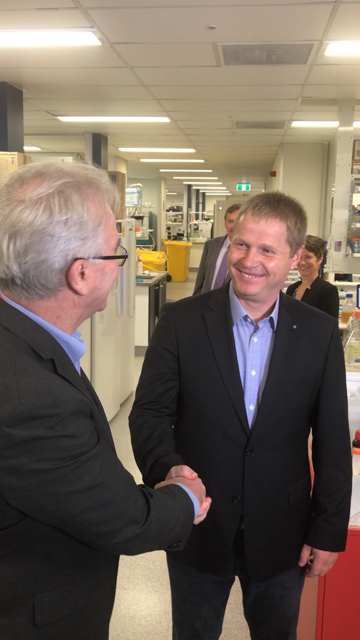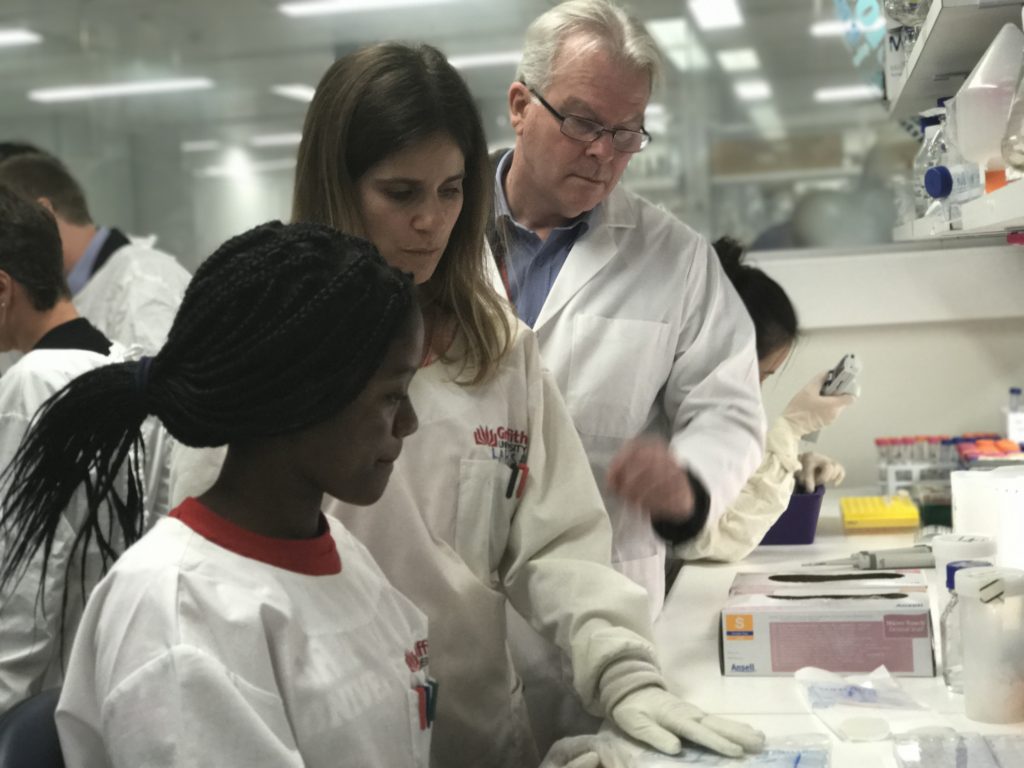Griffith University is taking on the deadly flu virus through an innovative partnership with German research institutes.
Researchers from the Fraunhofer Institute for Toxicology and Experimental Medicine (ITEM) have teamed up with the Hannover Medical School (MHH) and Griffith’s Institute for Glycomics on the Gold Coast for the
project called ‘iCAIR – Fraunhofer International Consortium for Anti-Infective Research’ to develop new anti-infective drugs.
This project will discover new treatments that combat respiratory viruses including influenza virus and respiratory infection-causing bacteria and fungi.
Professor Reimund Neugebauer, president of the Fraunhofer-Gesellschaft, said antibiotics were becoming less effective against multi-resistant bacteria.
“Because bacteria keep developing new resistance to antibiotics there is a desperate need for new medications,” he said.
“We urgently need to develop new drugs and find new ways to transfer them from research into clinical trials, and that is why Fraunhofer will be redoubling its efforts in this area.”
Professor Armin Braun, division director of preclinical pharmacology at Fraunhofer ITEM, said medicine needed new treatments to combat infection, and that translated into an urgent need to develop new drugs.

“High development costs, the likely brief treatment time and the potential for bacterial resistance have been putting companies off, since they are wary of losing money. One of the biggest obstacles to developing new drugs is what is known as the “valley of death” — the gap in the drug development chain.”
Professor Mark von Itzstein, Director of the Institute, said, “By pooling the unique and complementary core competencies of the three project partners, we have provided ourselves with the ideal framework for bridging the gap in anti-infective drug development”.
He added that this partnership would create a hub for respiratory infection studies in Australia using Fraunhofer developed human-relevant infection technology.
Professor Rita Gerardy-Schahn, director of the MHH’s Institute for Clinical Biochemistry, said, “In the long term, the Fraunhofer iCAIR project alliance could lead to a Fraunhofer Centre for anti-infective drugs in Australia.”
The German Ambassador to Australia, H.E. Dr Anna Prinz, said the award of a prestigious Fraunhofer ICON grant to develop the research partnership between the Institute and Fraunhofer ITEM was an exciting step forward in further strengthening relationships between the German and Australian research communities and respective industries.
Vice Chancellor Professor Ian O’Connor AC said he was delighted with the collaboration.
“This project will ensure Griffith University continues to be at the forefront of drug discovery and design, taking lifesaving research from the lab into a clinical setting,” he said.
City of Gold Coast Mayor Tom Tate said the partnership was one of the most significant announcements in the city’s history.
“It reinforces that we have the resources, capability and commitment to work at the highest echelons of medical research. What an amazing coup for our health and knowledge precinct and its partners,” he said.
“I applaud the Griffith team and congratulate everyone involved in making the Fraunhofer partnership a reality.’’

